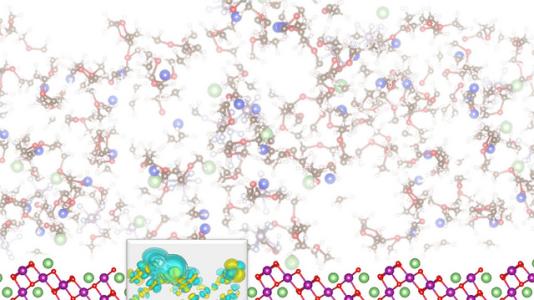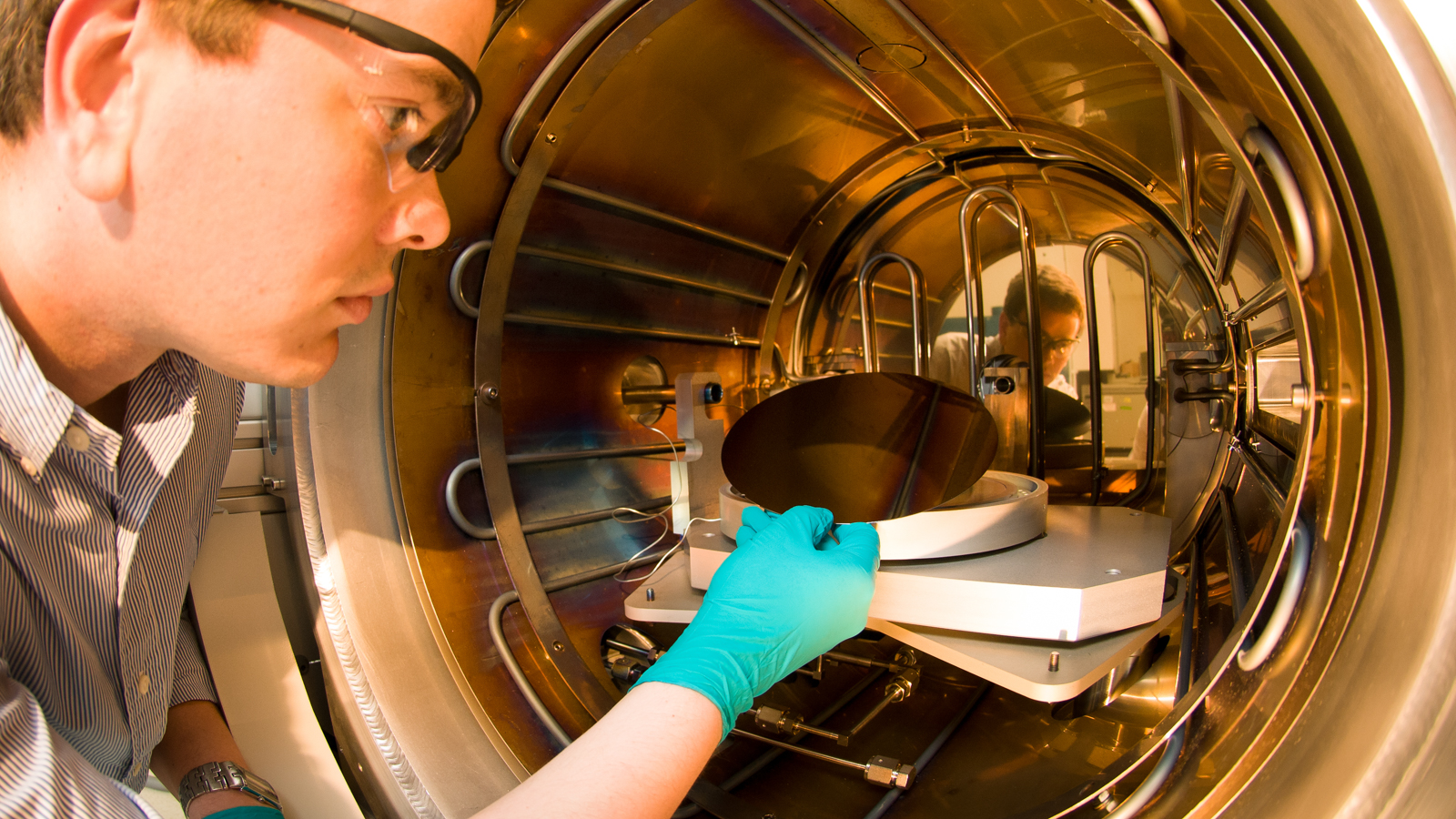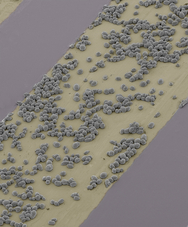
The US Department of Energy announced June 18, 2014, that it is funding a total of $100 million in 32 Energy Frontier Research Centers (EFRCs), including one at Argonne National Laboratory and several more in which Argonne will closely partner with other national laboratories and universities.
The EFRCs are designed to concentrate research firepower and resources to attack specific scientific problems that are blocking clean energy development, including energy storage, solar energy and materials science to build new technologies.
“Today, we are mobilizing some of our most talented scientists to join forces and pursue the discoveries and breakthroughs that will lay the foundation for our nation’s energy future,” said DOE Secretary Ernest Moniz. “The funding we’re announcing today will help fuel scientific and technological innovation.”
Each center will receive from $2 to $4 million for up to four years.
“The success of these EFRCs demonstrates that, when we bring top researchers together and provide them with state-of-the-art scientific facilities, we can accelerate discovery and make dramatic progress in our understanding of basic energy science,” said Argonne director Peter Littlewood. “Today’s awards underscore the importance of our continuing investment in the basic research this nation needs to create more sustainable and competitive energy technologies.”
Argonne’s Center for Electrochemical Energy Science was renewed to continue its work on the fundamental chemistry and materials underlying batteries and energy storage. Many aspects of batteries, like the structures and reactions at the nanoscale and even atomic level and the unique role of interfaces to control and stabilize electrochemical activity, are not yet well understood; the center seeks to build a library of knowledge that will act as a source of ideas and concepts for new designs. Paul Fenter leads Argonne’s efforts for the center.
For this center, Argonne will continue to partner with the University of Illinois at Urbana-Champaign, Northwestern University and Purdue University.
Five other EFRCs have Argonne as primary partners in the award.
The Argonne-Northwestern Solar Energy Research Center, or ANSER, is also a continuation of a partnership between Argonne and Northwestern University. Its goal is to revolutionize our understanding of the molecules and materials necessary to create dramatically better technology for solar fuels and electricity production. Michael Pellin leads Argonne’s efforts for the center.
The Center for Emergent Superconductivity, led by Brookhaven with Argonne as a primary partner, was also renewed. Its goal is to enhance understanding of superconductivity, a physics phenomenon in which a material can carry electric current with no resistance whatsoever. Breakthroughs in superconductivity theory and technology are often named among the top technologies that could revolutionize energy efficiency, electric grids, engines, windmill turbines and more. Wai Kwok leads Argonne’s efforts for the center.
The Fluid Interface Reactions, Structures and Transport (FIRST) Center addresses another aspect of electrical energy storage by developing greater understanding and models of the nanoscale environment at fluid-solid interfaces - which is a key environment in batteries. The center is led by Oak Ridge National Laboratory; Argonne’s effort is led by Paul Fenter.
The NorthEast Center for Chemical Energy Storage (NECCES) looks at the transformations that occur in an electrode composite structure over the course of a battery’s lifetime. Understanding these changes helps open avenues to new battery chemistries - and thus longer-lasting, safer, better batteries. Led by SUNY Binghamton, the center’s Argonne efforts is led by Karena Chapman.
Finally, the Inorganometallic Catalyst Design Center (ICDC) is newly formed to design materials and processes for energy-efficient conversion of shale gas components. The University of Minnesota is heading the effort, with Argonne’s contribution led by Olle Heinonen.
Each center will take full advantage of the wide-ranging scientific expertise and state-of-the-art facilities at Argonne, including the intense X-ray beams at the Advanced Photon Source, the IBM Blue Gene/Q supercomputer and expertise at the Argonne Leadership Computing Facility, multiple microscopes at the Electron Microscopy Center and more.
Of the 32 EFRCs funded in this latest round, 23 are led by universities, 8 by DOE national laboratories and one by a nonprofit organization.
The DOE noted that the first round of EFRCs produced 5,400 peer-reviewed scientific publications and hundreds of inventions at various stages in the patent process.
The full DOE announcement is available online.
Argonne National Laboratory seeks solutions to pressing national problems in science and technology. The nation’s first national laboratory, Argonne conducts leading-edge basic and applied scientific research in virtually every scientific discipline. Argonne researchers work closely with researchers from hundreds of companies, universities, and federal, state and municipal agencies to help them solve their specific problems, advance America’s scientific leadership and prepare the nation for a better future. With employees from more than 60 nations, Argonne is managed by UChicago Argonne, LLC for the U.S. Department of Energy’s Office of Science.
DOE’s Office of Science is the single largest supporter of basic research in the physical sciences in the United States, and is working to address some of the most pressing challenges of our time. For more information, visit science.energy.gov.

